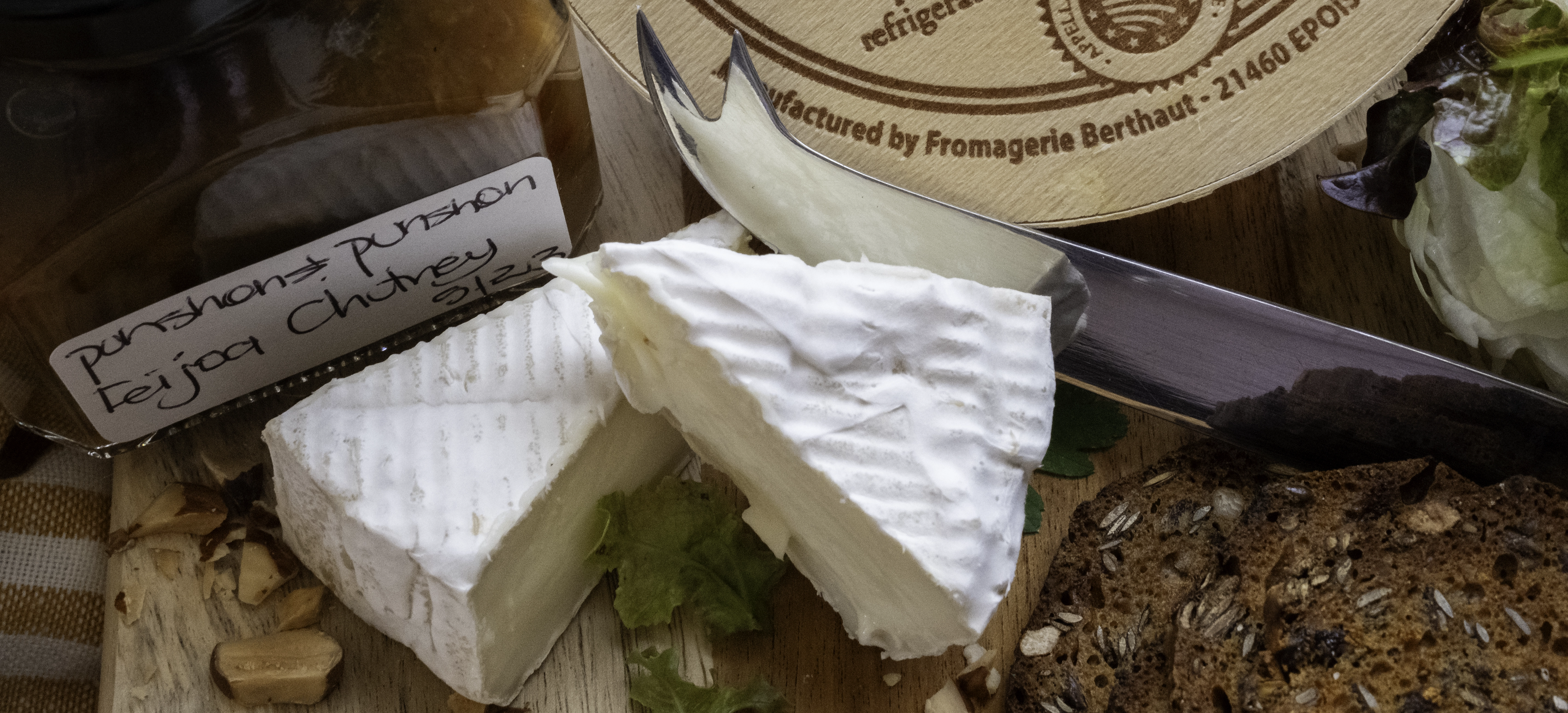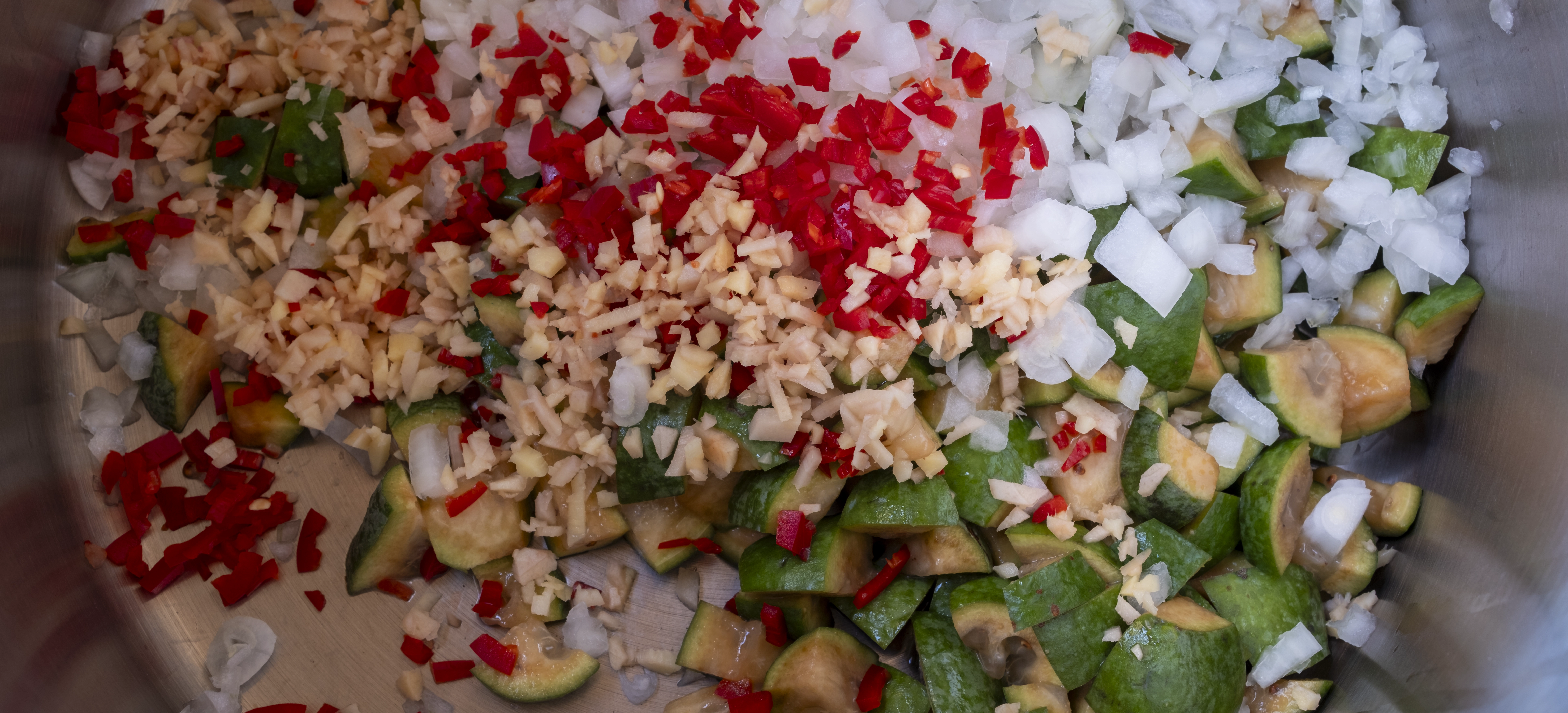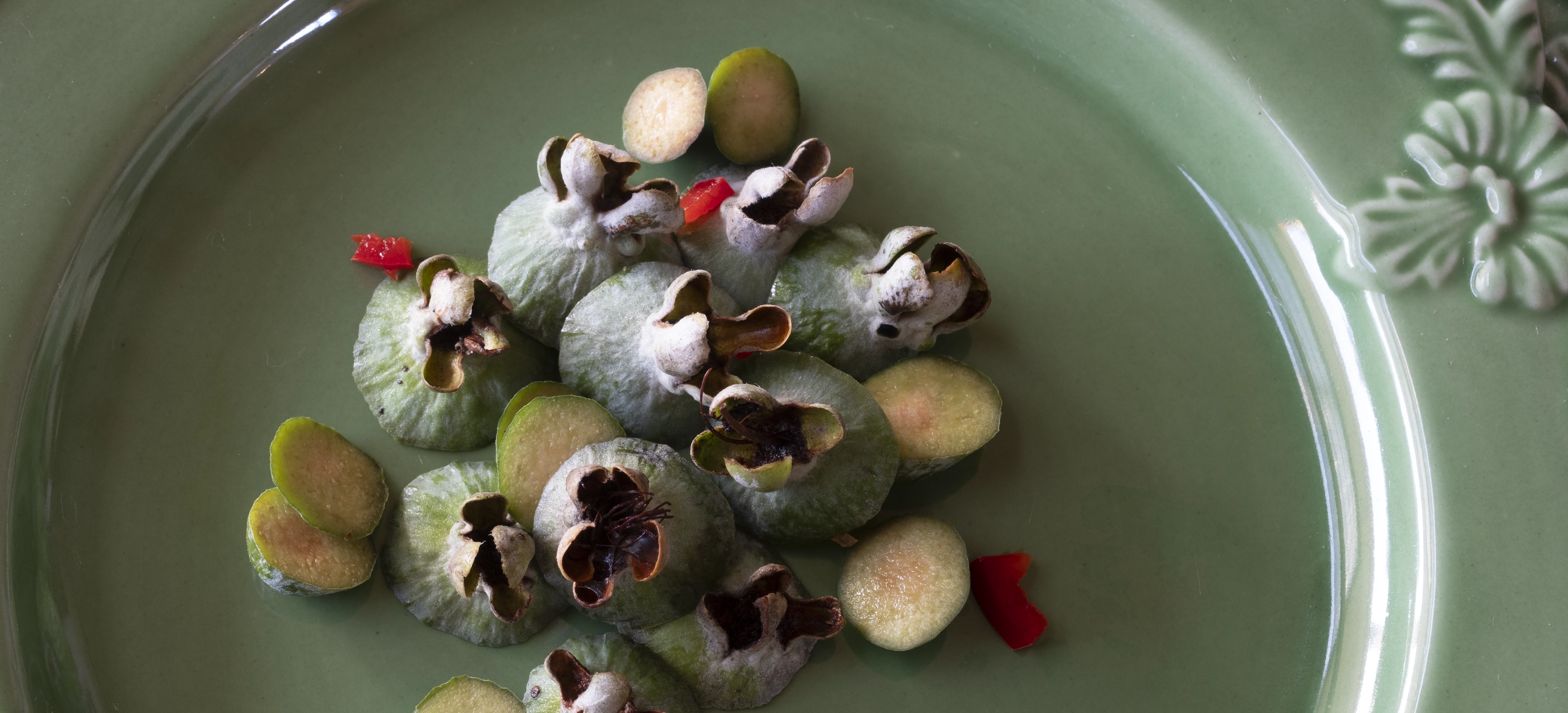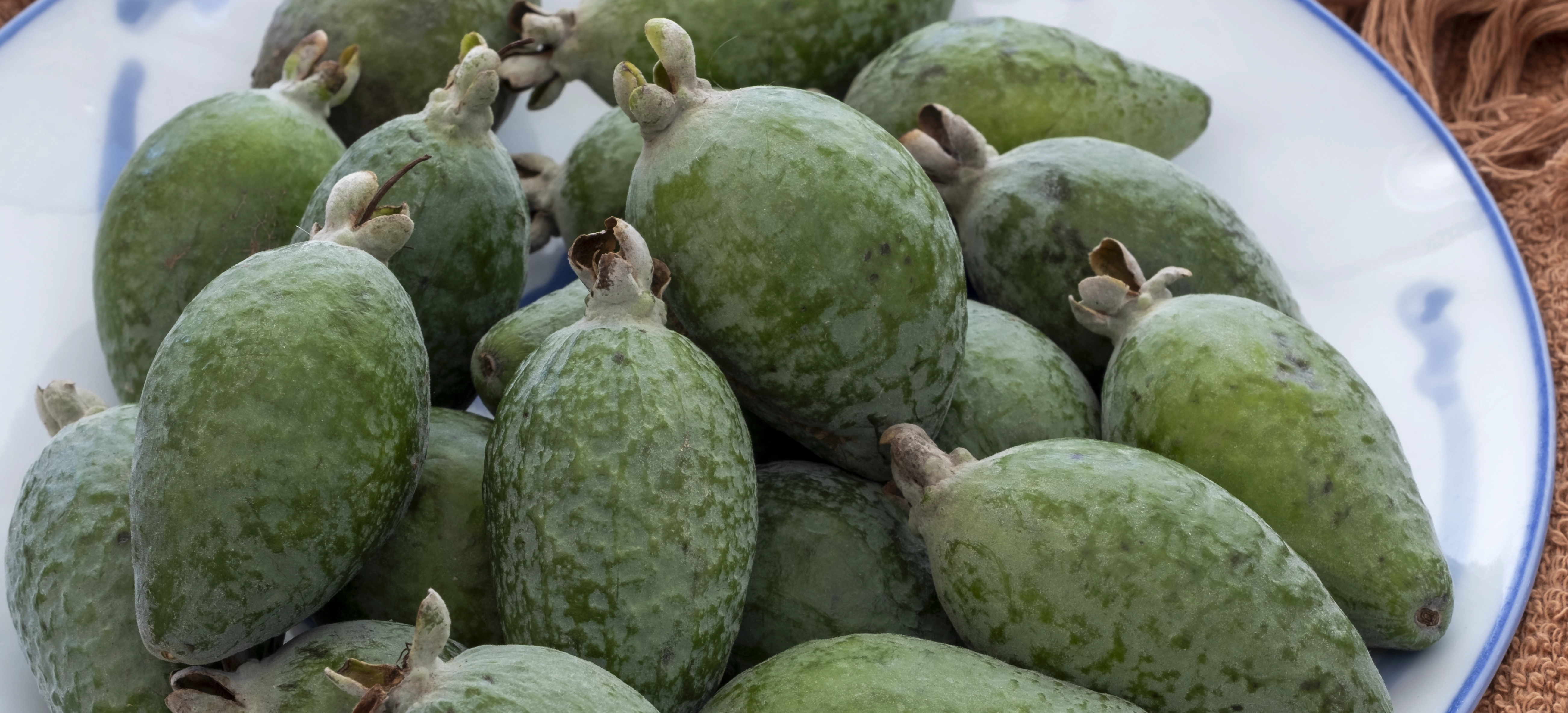Feijoa Chutney
- Pickles, Chutney, Relish & Sauces

Feijoa’s complex flavour and distinctive aroma makes a truly unique chutney. Some say they taste like a combo of strawberry, pineapple and guava and while this is a delicious combo, feijoa’s taste is much more than that. Their tropical flavour and their aroma will seduce and linger, leaving a permanent aromatic impression stamped onto your smell memory. When the fruit is abundant in late summer and early autumn, make sure you get hold of some to make this splendiferous tropical chutney. Feijoa’s have a short season and only last 3-5 days after picked, so they won’t be found in the supermarket. Someone in your neighbourhood will be growing this ornamental tree: it’s worth scouting around to find them and reward the gardener with a thank you jar or two.
- Preparation Time:
- 30 minutes
- Cooking Time:
- 60 minutes
- Quantity:
- 3 x 300 ml jars
INGREDIENTS
- 500g
- Feijoa's, ripe, firm
- 1/2
- Medium brown onion
- 200 g
- Raw sugar
- 350 ml
- Apple cider vinegar
- 2 teaspoons
- Curry powder
- 4 cm
- Ginger, fresh
- 1
- Chilli, red
- 1/4 teaspoon
- Ground cloves
- 1/4 teaspoon
- Salt

METHOD
Wash and dry the feijoas and chillies to remove dirt or unwanted residues and garden debris.
Top and tail the feijoa’s and leaving the skin on cut each fruit into half and then cut each half into 3 pieces.
Peel the onions, top and tail and deseed the chilli and peel the fresh ginger. Finely chop and place all the prepared fruit and vegetable ingredients into a preserving or heavy bottom stainless steel pan. Add vinegar, sugar, spices, and salt.
Simmer gently with the lid on until the feijoa is very soft.
Stir the mixture occasionally to ensure it does not stick to the bottom of the pan. If the fruit is not cooked enough and there’s insufficient liquid to continue cooking, add water as required.
When the feijoa is soft, remove the lid and using a potato masher, smash the mixture to break down the feijoa pieces and create a more jammified consistency. If you like a more chunky style chutney, do not mash the mixture.
When cooked to the right consistency, refer the Notes Section To test chutney Consistency below, remove from the heat and place on a heat resistant board to cool slightly.
Using a funnel, pour the hot chutney into hot dry sterilised jars and fill to approximately 2.5cm (1inch) from the top. Seal immediately with hot dry sterilised lids.
Label and store in a cool dark place in the kitchen or pantry.
Allow the chutney to mature for at least 2 weeks, preferably 4 weeks, before eating.
NOTES

- Choose clean ripe fruit. Do not use overripe and never use mouldy fruit as this will produce a poor-quality chutney.
- Good quality jars should be used in preserving, particularly when they are processed in a hot water bath. Thin jars often cannot withstand the temperatures and may crack either in the bath or on and or after removal. Avoid the disappointment and invest in some good jars from a homewares or preserves outlet. Select jars that have non-reactive lids as the vinegar solution can cause the lids to rust over time. It prevents, rust, moisture and other contaminants entry and spoiling your chutney.
- The type and colour of the sugar and vinegar used will affect the final colour and flavour of the chutney. Malt vinegar and brown sugar will produce very dark brownish chutney with a more earthy/molasses background flavour. White wine or apple cider and white sugar will allow the fresh fruit flavour of the pear to come through. I use raw brown sugar with apple cider vinegar in this recipe to add more depth of flavour without overpowering the feijoa’s unique tropical flavour.
- The cooking time is an approximation only. Cooking time will depend upon,
- the size of preserving pan- the broader the pan, the quicker the evaporation,
- degree of fruit ripeness – the riper the fruit, the sweet and juicier the initial chutney will be and the
- degree of heat when cooking – the higher the heat, the greater the boil which will produce greater evaporation. Towards the end of the cooking process, it may be necessary to stir regularly. It is important that the fruit does not stick to the bottom of the pan and burn. Your chutney will be tainted with a burnt flavour will is not very pleasant
- To test the chutney is cooked to the right consistency, spoon a little of the mixture on to a plate. It should hold its shape.
- The HHH method of HOT dry jars, HOT dry lids and HOT chutney creates a vacuum seal as the chutney cools. The “popping” sound, often heard in the kitchen, signals a successfully vacuum sealed jar.
- Always store chutney in a cool dark place. A warm area can cause it to ferment, and bright sunlight can affect the colour.
- Chutneys are best left to mature for 2 months in a cool dark place before eating. Traditionally they were stored in the cellar or pantry.
- Use a good quality sea salt, unrefined, where possible, when preserving. It’s worth hunting around for. Table salt, which is cheap and readily available in supermarkets contains stabilisers and anti-caking agents and often iodide which forms a whitish haze and sediments in pickled vegetable recipes. These additives, and in particular iodine, can affect the appearance and taste of pickles during the maturation and storage period. The ingestion of a cocktail of anti-caking chemicals such as calcium silicate, sodium silicoaluminate, tricalcium phosphate, magnesium carbonate, silicon dioxide and yellow prussiate of soda, is also unnecessary. Lite Salt may be used in quick pickle recipes; however, it may result in a slightly different taste than expected. The natural calcium and magnesium impurities of unrefined sea salt helps to cross link and reinforce the cell wall pectin’s, creating a crisp pickle. Read the label before buying and look for salt that is free from any artificial additives. My favourite salt is Olsson Cooking Salt . No commercial benefits is received from Olsson salt.
- Handling Chilli
- It is important to wash your hands thoroughly after handling and de-seeding chillies. Chilli oil is easily transferred from the chillies to hands. If you touch your eyes or any delicate areas, the chilli oil will be transferred on contact and create a burning sensation.
- Why is chilli so hot? The legendary heat comes from a natural compound, capsaicin, which develops and is concentrated in the white pith with some migrating to the seeds. The amount of capsaicin a chilli contains depends upon the chilli variety and growing condition. High temperatures and drought can increase capsaicin production as the chilli ripens. To control and reduce the amount of heat, use the most appropriate variety and amount of chilli, remove as much or little of the white membrane and seeds and vary the length of contact time with other ingredients while cooking to suit your taste.
- Chilli heat or pungency is measured in Scoville Heat Units (SHU) which was developed in 1912. The higher the Scoville rating the hotter the chilli. The ubiquitous Jalapeno varies between 2,500 – 10,000 SHU which is mild compared to the Habanero and Scotch Bonnets 80,000 – 150,000 SHU or the hottest chilli in the world, the Carolina Reaper, which has been measured at 2million SHU! Aptly named the Reaper; use with extreme caution. SHU was developed in 1912.
- Dried chilli develops an earthy, woody, and nutty flavour complexity that is rare among other herbs and spices. Substitute dried chilli in recipes throughout the year, make your own special chilli powder blend with dried ground cumin, garlic and oregano or grind finely to make a hot chilli powder.
- Clove (Syzygium aronaticum)
- Cloves are the dried unopened flower buds of a tropical evergreen plant. Borne in cluster of 10-15, they are picked when full size, still green but just on the verge of turning pink.
- Aroma is pungent, warm, aromatic, camphor -like and faintly peppery. Flavour is intensely pungent – words like medicinal warming sweeter, lingering and numbing come to mind. Used in moderation, cloves bring a pleasing, palate-cleansing freshness, and sweet spicy flavour to food. Has a powerful flavour and is usually tamed by blending with other similar warming spices to soften its dominance. Use sparingly.
- Look for cloves that are plump, not shrivelled or broken and where the majority retain their rounded tops.
- Curry powder
- Curry powder is a blend of sweet, pungent, hot and amalgamating spices. Using different combinations and proportions creates a variety of styles to suit different tastes. Amalgamating spices have the magical ability to harmonise the spice blend. The principal components of a Madras style curry powder include, cinnamon, allspice, nutmeg, cloves. cardamom, cumin, chili, pepper, fenugreek, fennel, coriander and turmeric. It’s believed the concept of a curry powder was initiated by the English colonists. On returning to England, they wanted to recreate the exotic flavours they enjoyed while serving in India.
- Curry powder should be stored in an airtight container away from extremes of heat, light and humidity. Under these conditions it should keep its flavour for 12 months.
- Ginger (Zingiber officinale)
- Ginger has a hot-spice, citrusy woody taste. It’s available as a fresh underground stem, a rhizome, as a finely ground powder and preserved in sugar. The dried and preserved version is used in baking, dried is also used in spice blends whereas fresh ginger is used widely in Asian cuisine. Do not substitute dried ginger for fresh, when specified in a recipe, as the dried form has a stronger and more aromatic flavour. When purchasing fresh ginger, avoid older rhizomes with signs of shrivelling as the plan is drying out and the flesh can be fibrous.

